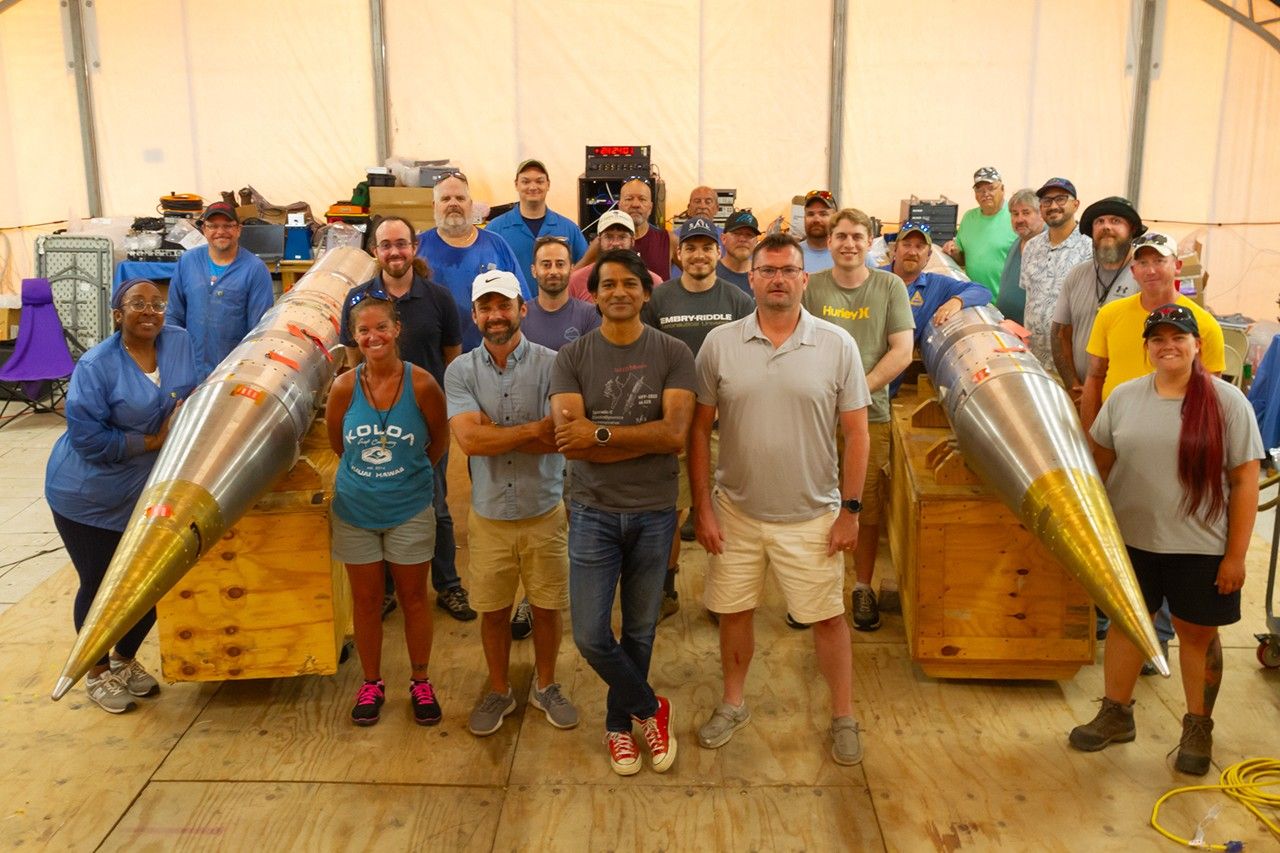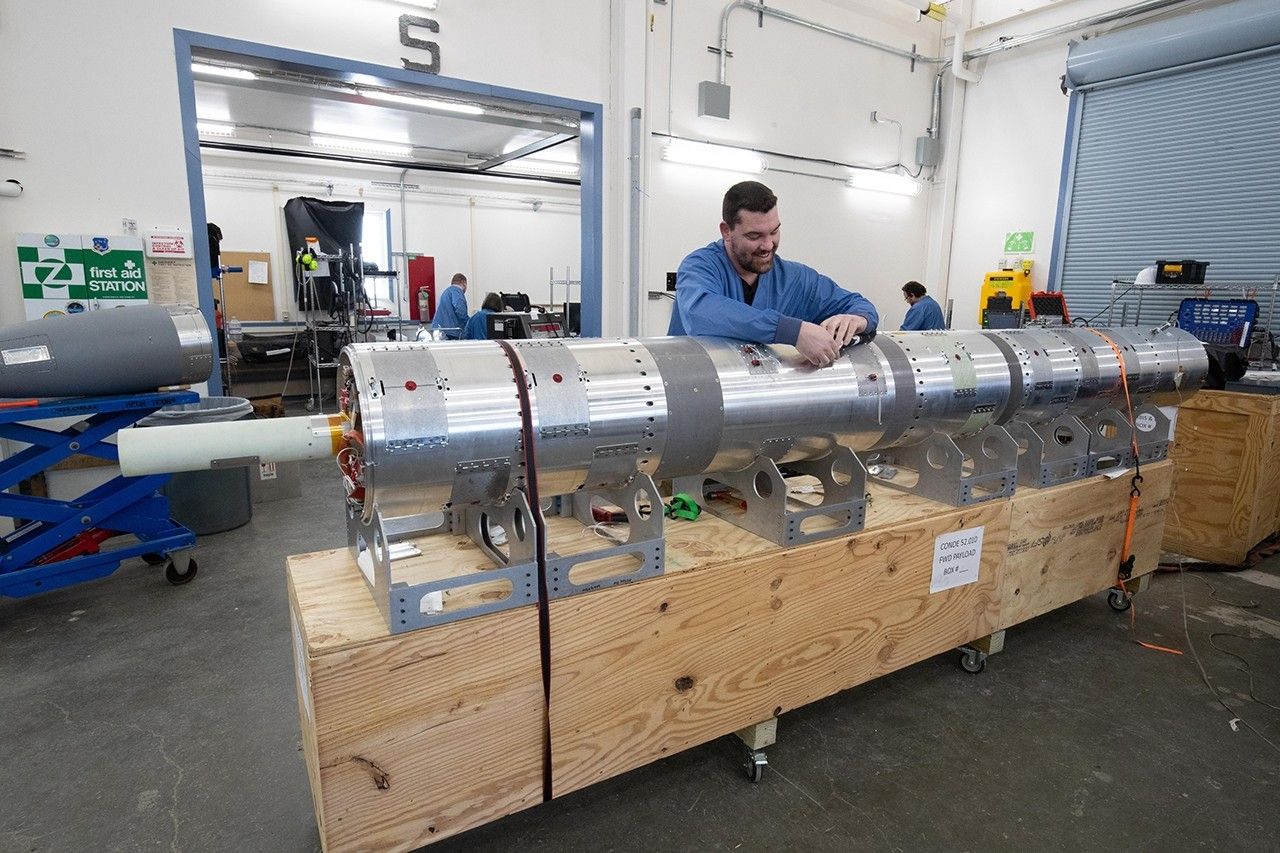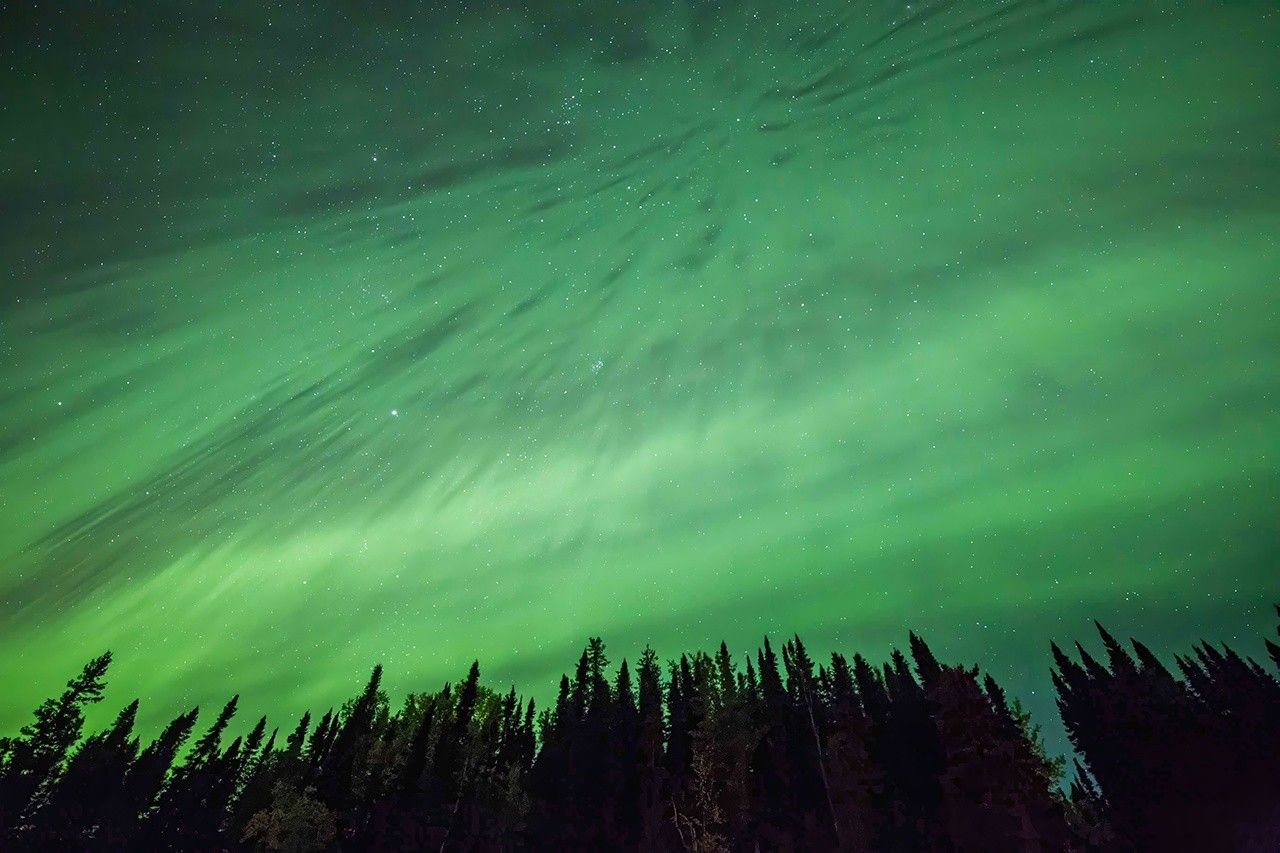UPDATE Oct. 30, 2017:
The Dual-channel Extreme Ultraviolet Continuum Experiment, or DEUCE, was launched at 6 a.m. EDT, Oct. 30, from the White Sands Missile Range in New Mexico. The Black Brant IX sounding rocket performed nominally. However, science data was not obtained because of a possible issue with the attitude control system. The payload descended by parachute and was recovered. The Sounding Rocket Program Office is investigating the anomaly.
Oct. 27, 2017 – Though stars and galaxies fill our night sky, most of the matter in the universe resides in the dark voids in between. Spread out over unfathomable distances, this cold, diffuse gas between galaxies — called the intergalactic medium, or IGM for short — hardly emits any light, making it difficult to study.
Scientists plan to launch a sounding rocket for a fifteen-minute flight Oct. 30, 2017, equipped with special ultraviolet optics, which they hope will shed light on the nature of the IGM. The Dual-channel Extreme Ultraviolet Continuum Experiment, or DEUCE for short, plans to measure starlight from a pair of nearby hot stars in the constellation Canis Major, aiming to help researchers understand how the IGM got to its current state.
Scientists know that the IGM, which is mostly hydrogen, has been blasted with high-energy radiation, causing the electrons to break apart from their atoms — a process known as ionization. Many think intense ultraviolet starlight from star-forming galaxies is responsible for ionizing the universe, but not all agree this is the sole cause. Since Earth’s atmosphere blocks ultraviolet light, it is impossible to study this type of radiation from the ground. Instead, scientists must capture this light from above the atmosphere, and sounding rockets — which provide an inexpensive alternative to space telescopes — are a practical option.
“DEUCE is about being able to better understand if and how star-forming galaxies ionized the early universe,” said Nicholas Erickson, a graduate student at the University of Colorado Boulder working with the project. “This ionizing light has never been measured accurately in hot stars, and DEUCE will make the first calibrated measurement of it, telling us the contribution stars could have had to helping ionize the universe.”
Over two flights, DEUCE will look at two young, bright stars — first Beta Canis Major and later Epsilon Canis Major — using a telescope sensitive to ultraviolet light. These stars are close enough that their light reaches Earth before being fully absorbed by interstellar gas, allowing the scientists to measure the amount of starlight to see if it’s enough to significantly contribute to the amount of ionized gas in the IGM.
“It’s a hard measurement to make, because there still is neutral hydrogen between stars that is extremely effective at absorbing the starlight at these wavelengths,” said Erickson. “To be seen at Earth, you need a really bright star that’s close by, and there are only two stars that are viable candidates for this measurement.”
DEUCE uses a microchannel plate detector — the largest ever flown in space — to measure the starlight. The mission, in addition to providing scientific data, will test this type of large UV detector for readiness in future large-scale space missions. DEUCE is scheduled to launch again in December 2018, to look at Epsilon Canis Major.
The experiment will launch aboard a Black Brant IX sounding rocket from the White Sands Missile Range Las Cruces, New Mexico. NASA’s sounding rocket program, based out of NASA Goddard Space Flight Center’s Wallops Flight Facility, flies 20 rockets annually, testing new instruments and supporting cutting-edge research in astrophysics and heliophysics.
Related Links
By Mara Johnson-Groh
NASA’s Goddard Space Flight Center, Greenbelt, Md.





























